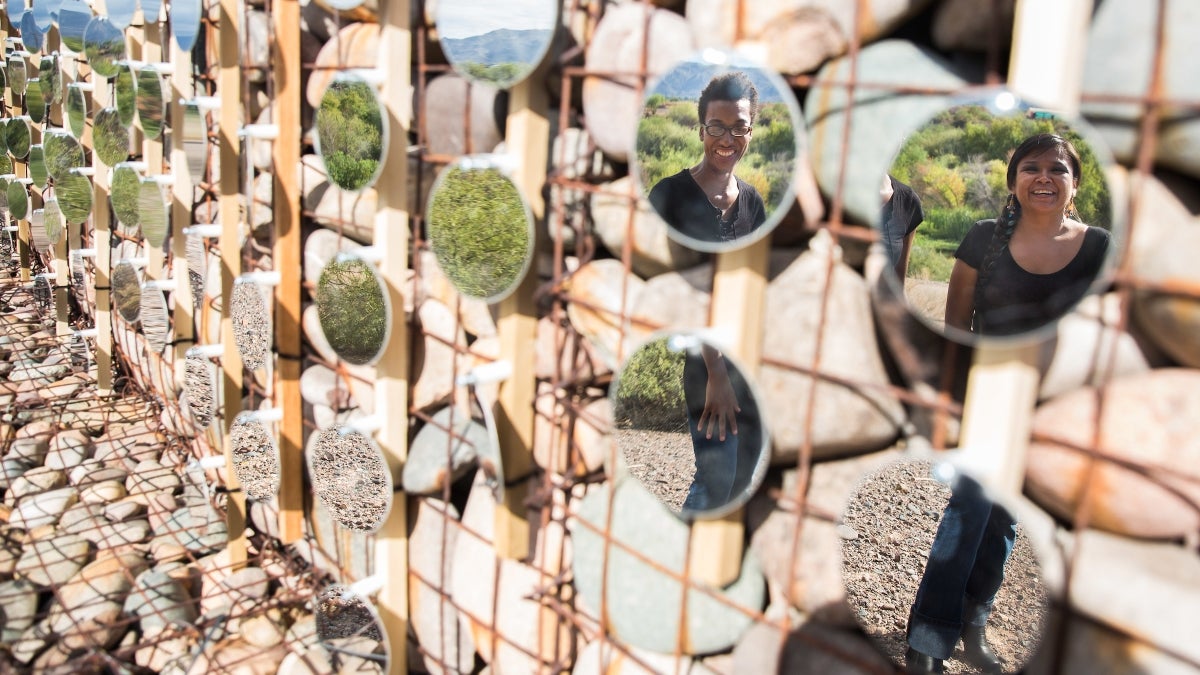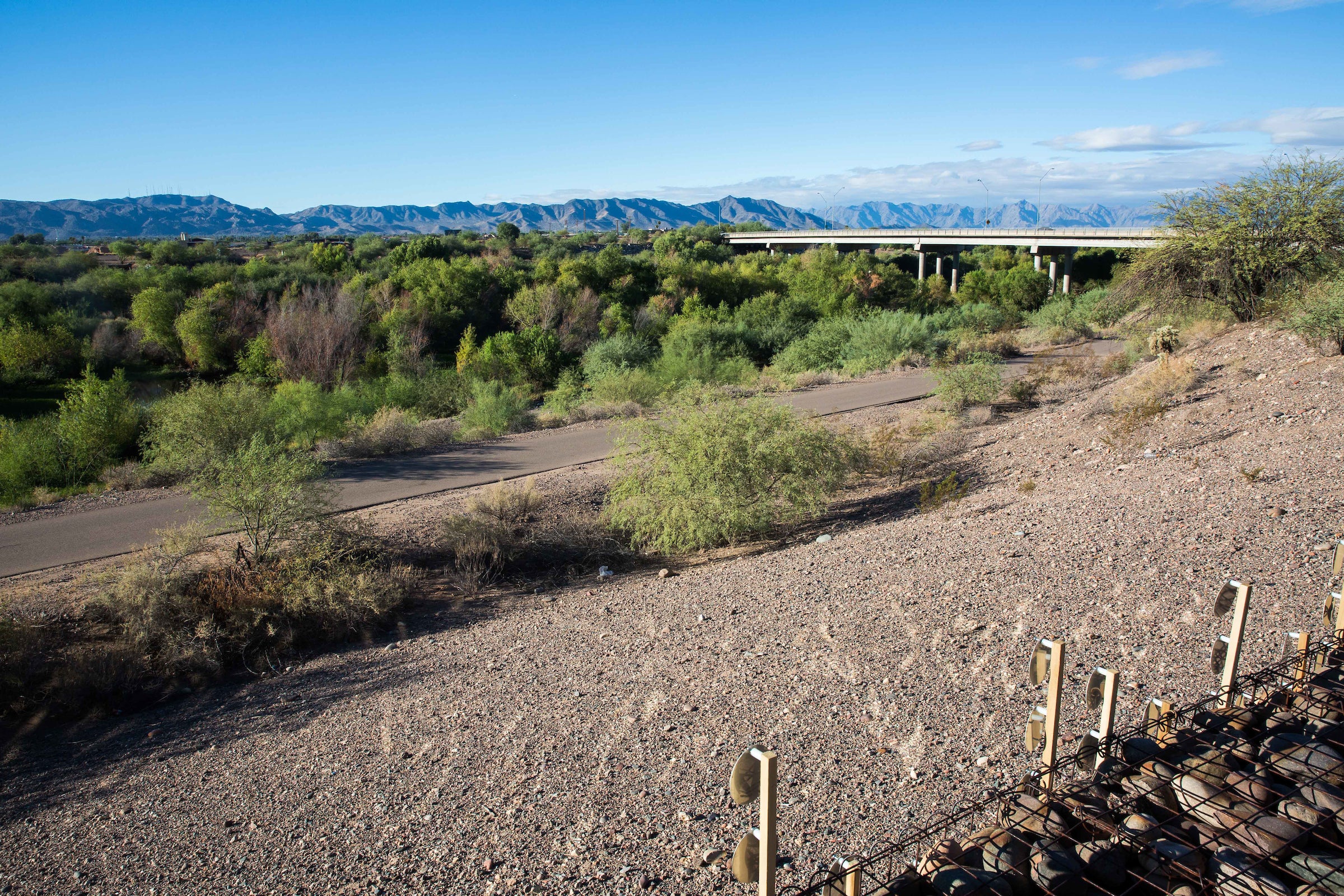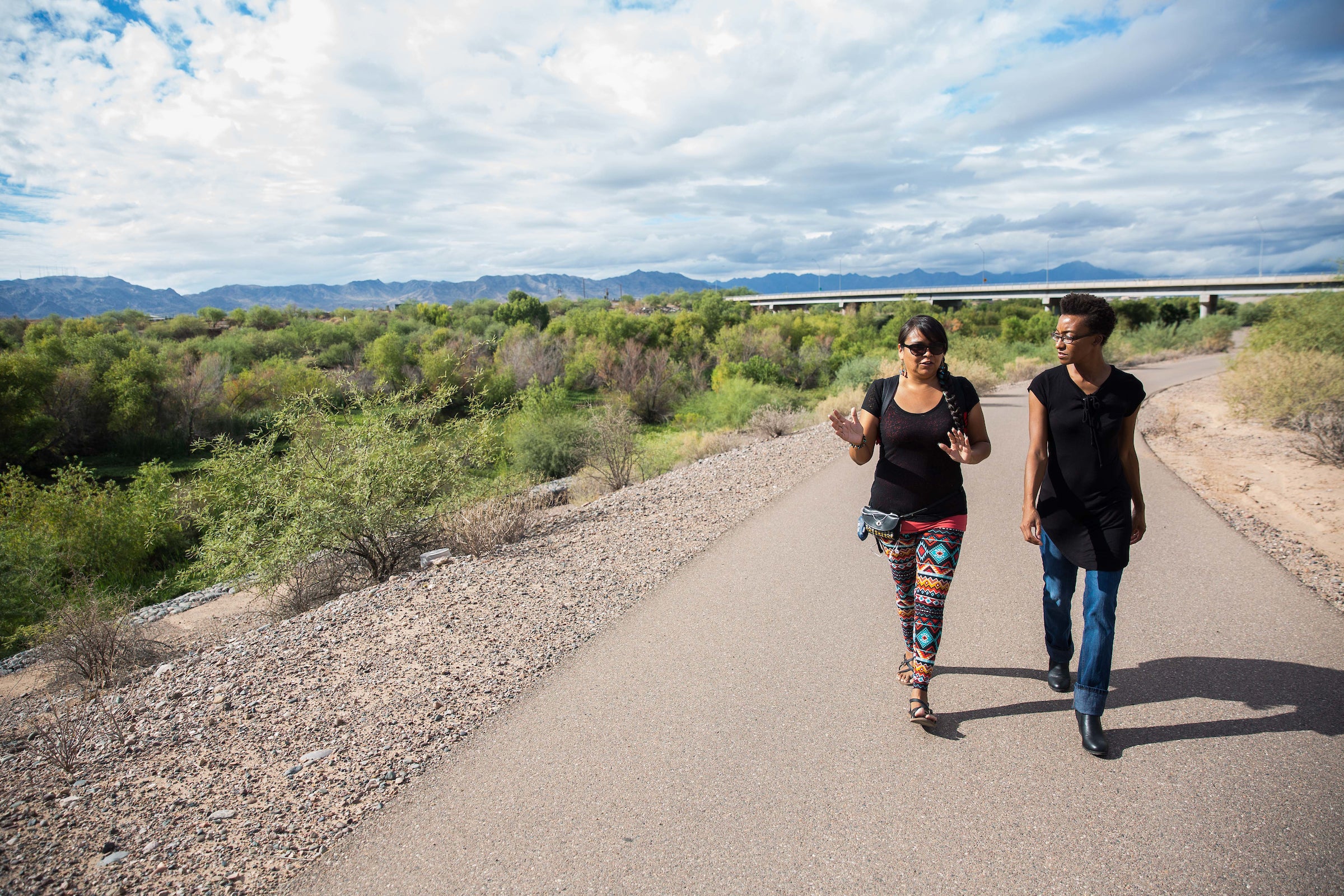A group of artists will perform and display their work on top of a former landfill this weekend to encourage dialogue on issues such as displacement, immigration and desert water use.
Phoenix’s Rio Salado Habitat Restoration Area, a little-known and barely used riparian corridor, will be transformed into a pop-up art installation as part of ASU’s ongoing “Performance in the Borderlands” series.
National artist Ana Teresa Fernandez will unveil her site-specific installation, “Oasis,” on Sept. 24-25 at the habitat, Seventh Avenue and Lower Buckeye in south Phoenix. The free event is open to the public and runs from 5 to 7 p.m. each day.
An initiative of the Herberger Institute for Design and the Arts’ School of Film, Dance and Theatre, “Performance in the Borderlands” is an annual art series of plays, installations, workshops and lectures that brings together a collection of local and national artists to focus their talents on borderland issues.
This year’s theme, “Voices of Power,” examines the role of women of color in the arts and social justice. The series kicked off Sept. 13 with a panel of prominent artists discussing their work’s potential to drive social and political change. ASU Now will follow the initiative to document the ways it engages the people and the region.
“Oasis,” which will also feature original work from local artists Raji Ganesan, Rashaad Thomas, Leah Marche, Liliana Gomez and Eunique Yazzie, hopes to continue the community dialogue.
“The Rio Salado is a place of great complexity, tragedy and hope,” said Mary Stephens, producing director for “Performance in the Borderlands.”
Phoenix’s Rio Salado Habitat Restoration Area was once part of a dump site. This weekend it will be transformed into a pop-up art installation as part of ASU’s ongoing “Performance in the Borderlands” series. Photo by Deanna Dent/ASU Now
“The river represents the potential for life in the desert, but also holds painful histories of ongoing displacements and environmental degradation. These converging histories and themes continue to play out again and again across the United States.”
Once a dried-up riverbed full of trash that was part of a dump site, the Rio Salado Habitat is now home to more than 200 species of birds and 5 miles of paved and dirt trails dotted with ponds, gardens, bridges, desert grasslands and picnic areas.
Fernandez said she purposely chose the site because of its history and location. She said it was first used by Hohokam Indians as a water resource until it was colonized. In the early 20th century, the U.S. Bureau of Reclamation constructed several dams along the Salt and Verde rivers to regulate the river’s flow and created a series of lakes that would provide a reliable year-round water supply for the Valley.
At the turn of the century, demand for water had reduced the Salt River to a barren riverbed, and the area became a dumping ground and homeless camp. In 2001, Phoenix residents approved a $16 million bond issue to fund the cleanup of the riverbed and the habitat restoration. The habitat opened in November 2005, but it’s still a secret to many Phoenix residents.
“This is a place that has value and should be appreciated more, but it’s not because it’s literally on the wrong side of the tracks and has a bad reputation,” Fernandez said.
Her installation of 900 disc-shaped mirrors against a large wall is intended to showcase the 5-mile habitat as an oasis in the desert.
Navajo Nation artist Eunique Yazzie wrote an original poem titled “Time Immoral,” which touches on the history of the site, the duality of living in two worlds and living in a consumer nation.
Performers Leah Marche (right) and Eunique Yazzie survey the Rio Salado Preserve on Sept. 22. Photo by Deanna Dent/ASU Now
“I see this cycle of how people keep their valuables in boxes tucked inside their garage and eventually when they decide to throw it out, it ends up in a landfill,” Yazzie said. “I hope it sparks a conversation about awareness and protection, and why we need to take a stand as a community.”
Poet Leah Marche will perform an untitled spoken-word piece about growing up in south Phoenix. She said the area has suffered from a negative stigma for years but is now experiencing gentrification.
“We’ve had people knock on our doors asking if we wanted to sell our house,” Marche said. “They don’t understand that is the place where I grew up and lived on the same street as my grandparents. The same place where I received a great education. For me, it’s always been a valuable part of town.”
Top photo: Performers Leah Marche (left) and Eunique Yazzie are reflected in the "Oasis" installation in the Rio Salado Preserve in Phoenix on Sept. 22. Photo by Deanna Dent/ASU Now
More Environment and sustainability

From environmental storytelling to hydroponics, student cohort crafts solutions for a better future
A select group of students from Arizona State University's College of Global Futures, a unit within the Julie Ann Wrigley Global Futures Laboratory, is laying the foundation to drive change…

2 ASU faculty elected as AAAS Fellows
Two outstanding Arizona State University faculty spanning the physical sciences, psychological sciences and science policy have been named Fellows of the American Association for the Advancement of…

Homes for songbirds: Protecting Lucy’s warblers in the urban desert
Each spring, tiny Lucy’s warblers, with their soft gray plumage and rusty crown, return to the Arizona desert, flitting through the mesquite branches in search of safe places to nest.But as urban…




